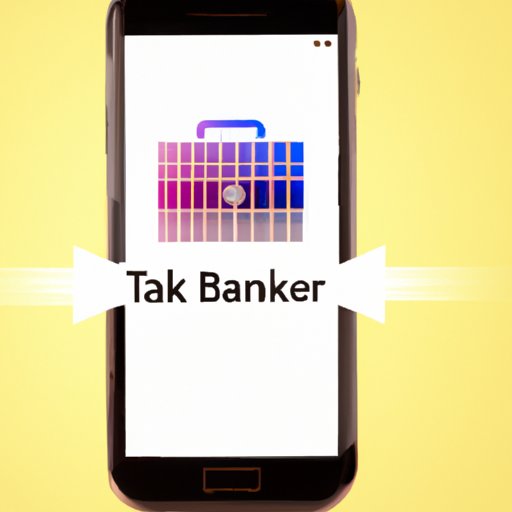
I. Introduction
Transferring money from one bank to another is a common need for many people, whether it’s to pay bills, send money to family members, or make a purchase. Thankfully, there are several methods available to transfer funds between banks. In this article, we’ll cover the most common ways and provide step-by-step instructions for each.
II. Online Bank Transfer
Online bank transfers are becoming increasingly popular as they offer convenience, speed, and security. To transfer money online:
- Log into your account and navigate to the transfer funds section
- Select the account you want to transfer from and the account you want to transfer to
- Enter the amount you want to transfer and any additional information required
- Review and confirm the transaction
It’s important to double-check that you’ve entered the correct account and routing numbers before confirming the transfer.
III. Mobile Banking
Mobile banking has revolutionized the way we transfer money. Most bank apps now allow you to transfer funds directly from your smartphone. To transfer money using a mobile banking app:
- Open the app and log in
- Tap on the transfer funds option
- Select the account you want to transfer from and the account you want to transfer to
- Enter the amount you want to transfer and any additional information required
- Review and confirm the transaction
Keep in mind that some banks may charge fees for mobile transfers or have limitations on the amount you can transfer in one transaction.
IV. Wire Transfer
Wire transfers are best for larger amounts or international transfers. To initiate a wire transfer:
- Contact your bank to verify their wire transfer procedures
- Provide the recipient’s bank details, including their account number and routing number
- Provide the amount you wish to transfer and any additional information required
- Pay any fees associated with the wire transfer
It’s important to remember that wire transfers can be expensive and may take a few days to process. Make sure you have all the necessary information before initiating the transfer.
V. ACH Transfer
ACH transfers are a cost-effective way to transfer money between accounts. To set up an ACH transfer:
- Log into your bank’s online banking system
- Select the account you want to transfer from and the account you want to transfer to
- Enter the amount you want to transfer and any additional information required
- Confirm and authorize the transaction
ACH transfers typically take a few days to process, so plan accordingly. Some banks may also charge fees for ACH transfers.
VI. Check
Checks can be an alternative method for transferring funds between banks, particularly if the recipient doesn’t have a bank account. To write a check:
- Write a check from your account, making it payable to the recipient
- Deposit the check into the recipient’s bank account
Keep in mind that it may take a few days for the check to clear, so plan accordingly. Additionally, some banks may charge a fee for receiving a check.
VII. Money Order
Money orders can be a good option for transferring money in certain situations, such as for larger amounts or if the recipient doesn’t have a bank account. To use a money order:
- Purchase a money order from your bank or another vendor
- Fill out the recipient’s information and sign the money order
- Give the money order to the recipient, who can then deposit it into their bank account
Money orders typically come with a fee, so be sure to factor this into the total cost of your transfer.
VIII. ATM Transfer
Some banks allow customers to transfer money between accounts using an ATM. To initiate an ATM transfer:
- Insert your ATM card and enter your PIN
- Select the transfer funds option
- Select the account you want to transfer from and the account you want to transfer to
- Enter the amount you want to transfer and confirm the transaction
Keep in mind that some banks may charge fees for ATM transfers, and there may be limitations on the amount you can transfer in one transaction.
IX. Conclusion
As you can see, there are several ways to transfer money from one bank to another. Whether you prefer to handle your transactions online, through mobile banking, or by other means, there’s likely an option that will work for you. Just be sure to factor in any associated fees and processing times when making your decision.





